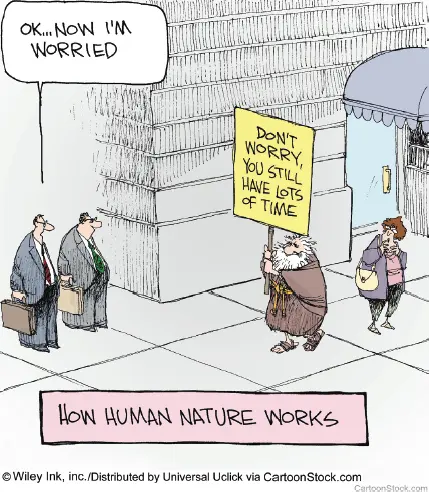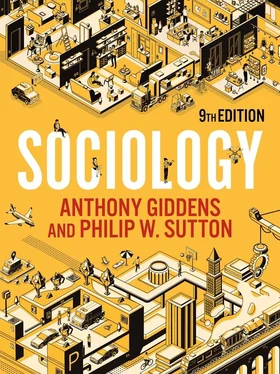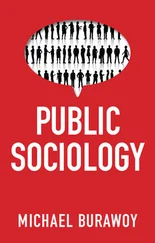The UN Framework Convention on Climate Change was created in 1997 in Kyoto, Japan, where agreement was reached to cut emissions significantly by 2012 in order to stabilize and eventually reduce greenhouse gas levels in the atmosphere. Targets ranged from an average 8 per cent cut for most of Europe to a maximum 10 per cent increase for Iceland and an 8 per cent increase for Australia. The USA originally committed itself to a 7 per cent cut but has never ratified the protocol. The Kyoto Protocol took 1990 greenhouse emission levels as its starting point. However, this was seen in the Global South as favouring the industrialized countries, both failing to take into account the latter’s ‘historical responsibility’ for creating global warming and, hence, avoiding attributing blame. It is also unclear exactly when developing countries will be asked to reduce their emissions or by how much. Will it allow for the inevitably higher emissions levels as their economic development catches up with that of the industrialized world? If it does not, then it may be seen as unfair and unworkable (Najam et al. 2003).
Following acrimonious disagreements and failure to secure a binding agreement at the Copenhagen talks in 2009, the Cancun meeting in 2010 was widely seen as marking progress: 190 countries agreed to bring the voluntary targets set out in Copenhagen into the process, to accept the goal of limiting the global temperature rise to less than 2°C, but to strive for 1.5°C. They also agreed to set up a green climate fund as part of a US$100 billion commitment to help developing countries move forward in non-polluting ways. The overall agreement is legally binding, but specific aspects such as pledges by individual nation-states to reduce emissions are not (Goldenberg et al. 2015).

In 2015, a new Paris Agreement (COP24 – the 24th ‘conference of parties’), involving 196 countries, was widely hailed as an important step forward. This agreement committed countries to reduce greenhouse gases (particularly CO 2) to keep global warming below 2ºC, preferably closer to 1.5ºC, by 2050. Yet in 2017 the new US president, Donald Trump (a global warming sceptic), announced that the USA would no longer participate in the agreement and would withdraw as soon as possible. Having promised to restart the coal industry, Trump saw the Paris targets as a threat to the US economy. This perceived choice between promoting economic growth or tackling global environmental problems is widely viewed today as wrong-headed. As we shall see later, it is possible to envisage and plan for ecological modernization and economic growth based on ‘greening’ the industrial economy, shifting away from polluting industries towards renewable technologies. Reshaping economies in this way is often referred to as the ‘green industrial revolution’ or the ‘green new deal’.
However, at the 2019 COP 25 conference in Madrid, broad agreement could not be reached on taking the Paris agreement forward to more ambitious national targets. And even if existing commitments on emissions reductions were actually met, global greenhouse gas emissions by 2030 would still be 38 per cent above what is needed to restrict warming to the agreed 1.5ºC target. The UN secretary general, António Guterres, said that an important opportunity to adopt a more ambitious programme of action had, once again, been missed (Carbon Brief 2019).
As with other manufactured risks, no one can be absolutely certain what the effects of global warming will be. Would a ‘high’ emissions scenario truly result in widespread natural disasters? Will stabilizing the level of carbon dioxide emissions protect most people from the negative effects of climate change? We cannot answer these questions with any certainty, but international scientific collaboration and political processes do seem to offer the most viable ways of dealing with the problem, which is, after all, a global one. In addition, the underlying anthropogenic causes of global warming require an understanding not just of the basic environmental science but also of social processes.
‘People in the developed world are responsible for causing global warming and they should accept a lower standard of living to rapidly reduce greenhouse gas emissions.’ Which aspects of modern life should bear the brunt of the necessary radical changes?
Air and water pollution
Air pollution
It is possible to make a distinction between two types of air pollution: ‘outdoor pollution’, produced mainly by industrial pollutants and automobile emissions, and ‘indoor pollution’, which is caused by burning fuels in the home for heating and cooking. Traditionally, air pollution has been seen as a problem that afflicts mainly the industrialized countries as a result of mass production and large numbers of motorized vehicles. However, in recent years attention has been drawn to the dangers of ‘indoor pollution’ in the developing world, where many of the fuels used, such as wood and dung, are not as clean-burning as modern fuels such as kerosene and propane.
Until the middle of the twentieth century, air pollution in many countries was caused primarily by the widespread burning of coal, a fossil fuel which emits sulphur dioxide and thick black smoke into the atmosphere. In many Eastern European countries and in the developing world, the practice remains widespread today. In the UK coal was used extensively to heat homes and power industry, but in 1956 the Clean Air Act was passed to regulate smoke pollution and smog (a mixture of smoke and fog). Smokeless fuels, such as kerosene, propane and natural gas, were promoted as alternatives and are now more widely used. In 2019 the government updated the Act by announcing a new Clean Air Strategy, which included a pledge to end the sale of petrol and diesel cars and vans by 2040 and to ban the most polluting forms of coal and wood used in open fires and stoves (Defra 2019a).
Since the 1960s the main source of air pollution has been the growing number of motor vehicles. In 2015, in the twenty-eight countries of the European Union, transport was responsible for almost one-quarter of greenhouse gases, and 72 per cent of these came from road transport (European Commission 2015a; see figure 5.2). Road transport emissions are particularly harmful because they enter the environment at a much lower level than emissions from tall industrial chimneys. As a result, cities have long been among the most polluted environments for pedestrians and workers. For instance, nitrogen oxides from diesel cars produce ozone and very fine particulate matter which impacts on human health. The UK government says that airborne nitrogen oxides lead to the premature deaths of some 23,500 citizens every year, and the European Environment Agency estimates that around 430,000 people across Europe died from the same causes in 2012 (Coghlan 2015).
Cars account for some 80 per cent of road journeys in Europe and make a major contribution to carbon emissions. A single occupancy car journey can produce more carbon per passenger, per kilometre travelled, than fully loaded short- or long-haul flights (Beggs 2009: 77–8). For this reason, attempts to reduce air pollution have focused on the use of low-emission travel alternatives such as passenger trains, high-occupancy buses and the sharing of car journeys. Since 2008, greenhouse gases from road vehicles in the EU and elsewhere have started to fall due to high oil prices and the increasing efficiency of private cars (European Commission 2015a). Yet stricter pollution targets do not, in themselves, guarantee reductions in real-world vehicle emissions, as a major scandal from 2015 demonstrates.
Читать дальше













